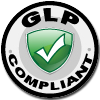What is Microorganism Identification? Method Description
Microorganisms and bacteria may be identified by morphological or biochemical methods and culture- or cloning-based methods. However, such methods allow for the characterization of only a fraction of the microorganisms. Standard phenotype-based methods have some limitations in identifying bacterial isolates, and such methods are unable to identify novel species. Molecular methods provide additional tools that can supplement biochemical testing for bacterial identification. Various nucleic acid amplification methods targeting conserved bacterial gene regions have provided accurate species determination. Of these, sequence analysis of the 16S rRNA gene has become the gold standard for definitive species identification.
PCR Amplification of 16S rRNA
At Altogen Labs, we use a polymerase chain reaction (PCR)- and DNA sequencing-based approach, and the 16S small-subunit rRNA gene sequencing plays a pivotal role in accurate identification of bacterial isolates and discovery of novel unknown bacteria. The key to 16S rRNA gene sequences lies within the highly conserved primer binding sites, which allow for easy and accurate amplification of the 16S ribosomal DNA. Specific identification of microbes is determined based on the hypervariable regions of the 16S rRNA that provide signature sequence distinctions among microbial species and genera. The 16S small-subunit rRNA gene sequencing also provides definitive identification of diverse bacteria, especially of bacteria with unusual phenotypic profiles, rare bacteria, slow-growing bacteria, uncultivable bacteria, and for culture-negative bacterial pathogens. Sequencing of all or part of the 16S rRNA gene has been used for bacterial identification. Our identification assay capitalizes on the highly conserved nature of the 16S rRNA genes by positioning amplification and sequencing primers in the conserved regions that flank the variable regions, specifically V1, V3, and V6, thereby allowing primers to theoretically amplify most bacteria.
The rapid identification of bacteria and fungi through 16S ribosomal DNA gene sequencing is beneficial for
o Bacteria with unusual phenotypical characteristics or complex/slow growth patterns
o Viable or non-viable material (cultured/uncultivable or slow growing)
o Isolates with gram variability
Identification via Sequence Comparison to Genetic Library
The sequence reads obtained from sequencing each dataset are input into software packages that generate the result of the identity of the isolate on the basis of its sequence database. The DNA sequencing and pyrosequencing-based identification coupled with culture findings and biochemical results provide a robust approach for more accurate identification of bacteria and other microorganisms.
Our Services
Altogen Labs provides 16S rRNA gene sequencing services of bacterial isolates from environmental samples as well as clinical specimens. Our technique allows characterization of microbial communities in complex ecosystems, such as soil and ocean water, and more recently, investigation of infectious agents of medical and veterinary importance. Identification of clinical isolates at the species level is important for characterizing associated disease manifestations and predicting antimicrobial susceptibility, as well as for epidemiological and ecological purposes.
After discussing the details of your project, we can provide an immediate price quote (contact e-mail: info@altogenlabs.com or call Altogen Labs technical support at 512-433-6177). Please note that experimental details will help us provide an accurate quote and timeline estimate.

see also:
What is Microorganism Identification? Method Description | Scientific Background: Specific 16S rRNA Regions | Bacterial Analysis: 16S Sequencing | Microbial Identification Service: Applications
